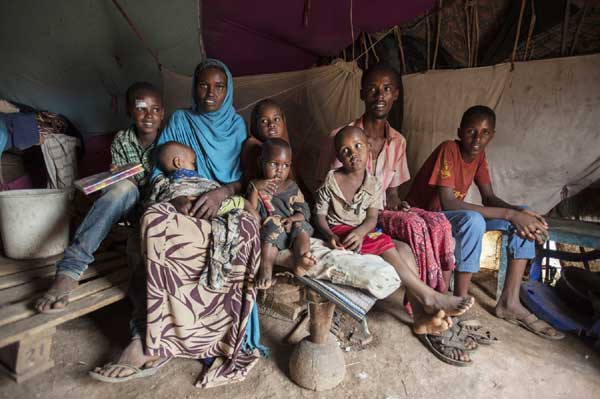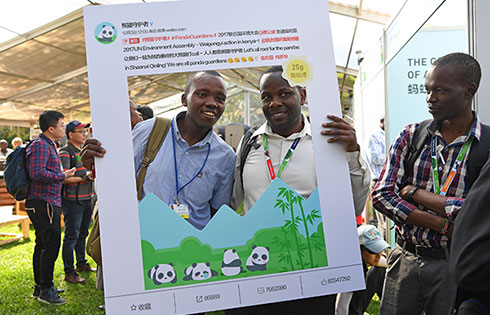Five years since the famine, Somali children still stalked by menace of hunger
 |
|
The family of Deerow Aden in Gadid camp for the internally displaced persons (IDPs), Baidoa, Bay region, southern Somalia. Malnutrition is particularly high in the IDP camps. "The baby is sick with vomiting and diarrhoea because it is dirty around here. We need some basic items to improve our lives," says the father of seven. [Photo/UNICEF] |
Hawa and her colleagues dispense crucial information on feeding and hygiene practices to the mothers. They also treat common childhood diseases and provide referral services. UNICEF supports this lifesaving work by Hawa and her colleagues with funds from donors. Not too long ago, the European Union's humanitarian department, ECHO, committed $2.8 million to support UNICEF's work on nutrition, water, sanitation, hygiene and other areas.
Treatment for malnutrition – as long as there are no complications involved - is simple. Given ready-to-use therapeutic food (RUTF), 90 percent of children can recover. But what's depressing is that as old cases are successfully treated, new cases occur; and children often become malnourished more than once. Until poverty, unemployment and poor living conditions are addressed, and solutions are found for the IDPs, Somali children will continue to live - and die - from the menace of hunger.
Kun Li is a Communication Specialist for UNICEF Somalia. Her email: kli@unicef.org
- Islamist al Shabaab attack Somali hotel, kill at least 11
- Somali military training base attacked with car bomb
- Somali FM mourns Chinese security officer killed in hotel blast
- Somali official says friendship between two countries intact
- Sino-Somali ties unaffected by bombing
- Beijing condemns Somali attack, mourns deaths





















